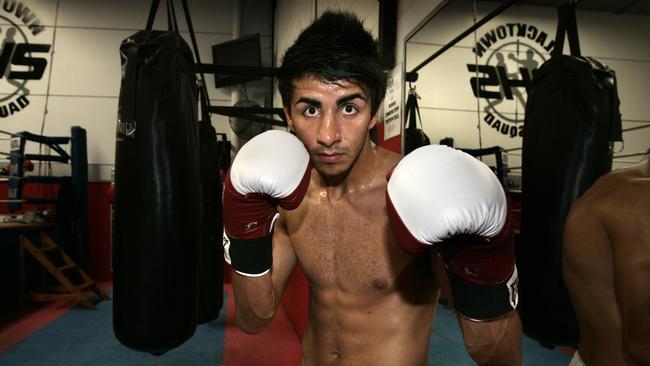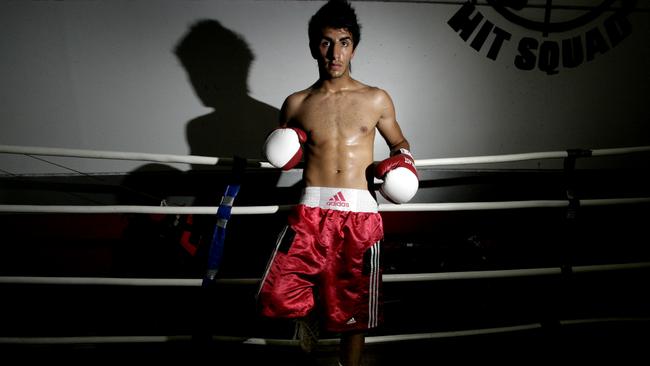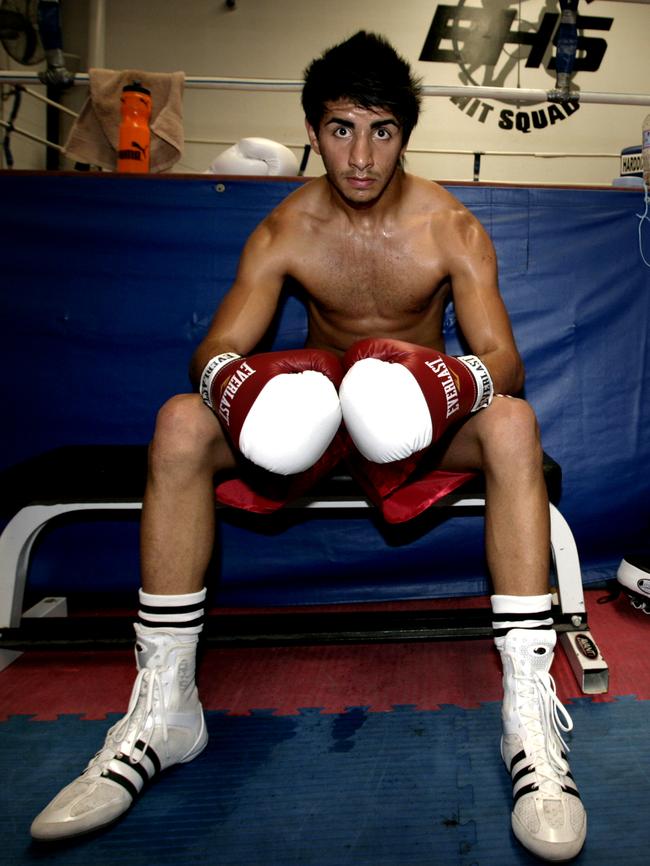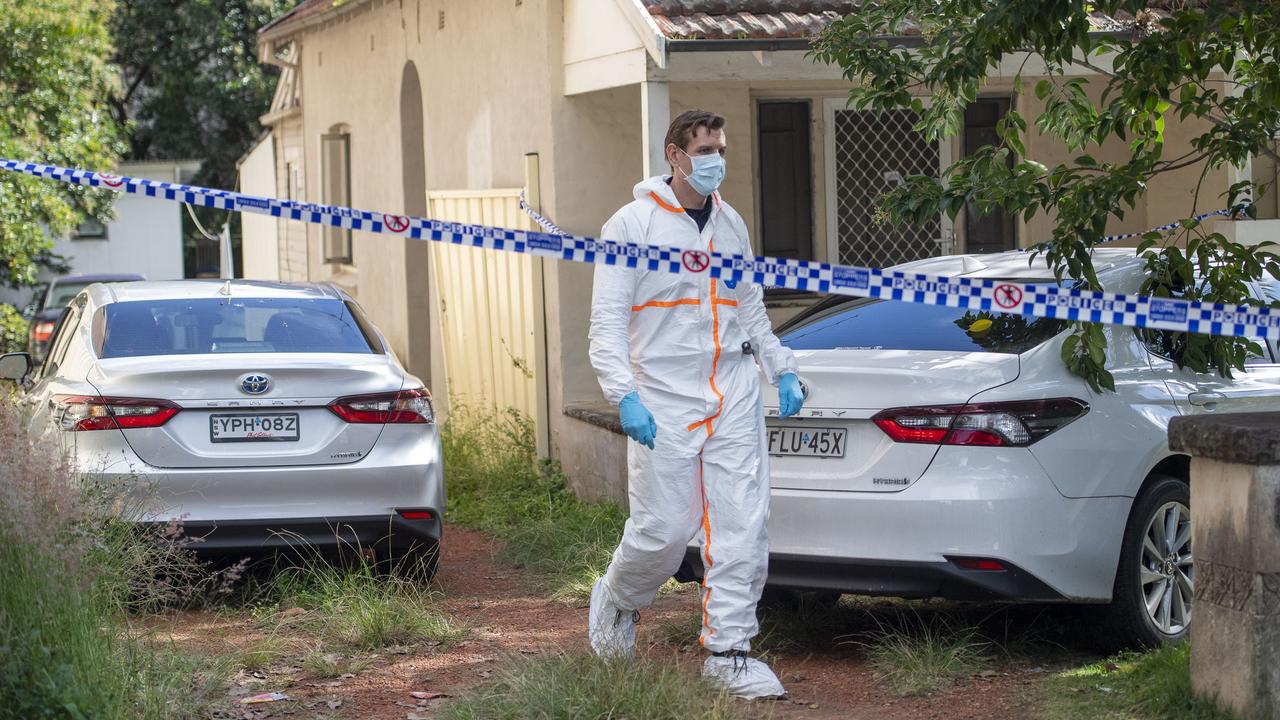From boxing champion to jailed drug addict: Boxer’s fall from grace
Bashir Sadiq overcame great adversity to become a rising boxing star. But a car accident in 2014 derailed his success and put him on a path to drug addiction and jail.

Police & Courts
Don't miss out on the headlines from Police & Courts. Followed categories will be added to My News.
As a rising boxing star in his 20s, Bashir Sadiq had the world at his feet.
He was the Australian and New Zealand amateur boxing champion and had been selected to represent his birth country of Afghanistan at the 2012 London Olympics.
But a series of shattering disappointments derailed his sporting dream and plunged him into a destructive drug addiction.

On Friday the 30-year-old was sentenced in Penrith District Court to a maximum 11 years in jail over a large-scale drug manufacture operation in suburban northwest Sydney that resulted in an explosion in 2018.
The case serves as a cautionary tale of the devastating toll the drug ice, coupled with childhood trauma, can have on people’s lives.
“It’s readily understandable that having achieved so much, compared with his background, that he then loses it all in effect and turns to drugs,” his barrister Winston Terracini SC told the court.
The court heard Sadiq was raised in war-torn Afghanistan, where he witnessed his mother being stabbed and father being kidnapped when he was five, before he migrated to Australia.
Along with traumatic memories of exploding rockets turning his neighbourhood into dust, Sadiq was also abused as a child by a relative, the court heard.
He was bullied as a child and ended up in schoolyard and street fights that were the source of tension between him and his mother.

But from the age of 15, Sadiq began boxing and channelled his energy into the sport.
“There was significant change in him after his boxing,” Judge Siobhan Herbert said, reading from a reference written by Sadiq’s sister.
“He had been a troublemaker at school but became patient and positive and believed anything was possible.”
Sadiq’s professional boxing career started at 17. By 21, he had qualified for the Afghanistan Olympics boxing team after travelling to Kabul for the qualifying rounds.
“I can‘t believe how my life changed in four years. I was mixed up with a bad crowd and would have ended up in prison,’’ Sadiq told the Rouse Hill Times after qualifying for the team.
But he was later informed by Afghan boxing officials he couldn’t represent the country, the court heard.

In a letter to the court, his fiancee said Sadiq started using drugs and alcohol in 2013 after a shattering “knockout” in a fight.
He tried to pick himself up and continued fighting until suffering a career-ending injury the following year.
“The last major blow was in 2014 when he injured his neck in a car crash and could no longer fight,” Judge Herbert said.
“That’s when drug and alcohol dependence spiralled out of control.”
Sadiq’s sister said he became withdrawn after the crash and she suspected he was “on something”.
“She believed he wouldn’t be in there, in custody, if his boxing career hadn’t ended,” Judge Herbert said.

The court heard that in 2018, Sadiq began assisting two other men who set up a clandestine drug lab inside the bedroom of a home in Stanhope Gardens.
Judge Herbert said she couldn’t find that Sadiq was engaged in the manufacture process but he was involved and able to assist.
Sadiq, who at the worst point of his addiction was using up to three grams of cocaine a day or five grams of ice, was captured on CCTV buying masks, methylated spirits, duct tape, sugar soap wipes and rags from Bunnings on August 28, 2018.
He also purchased a large plastic tub from Kmart that police later found at the drug lab.
Sadiq, who at the time was living in a $1100-a-week unit at Walsh Bay, told a psychologist he purchased items for his co-accused and allowed them to use his car in exchange for drugs.
On August 30, 2018, there was an explosion at the drug house. Inside, emergency services found a large clandestine lab operating in the master bedroom and ensuite.
There were precursor chemicals, glassware, protective equipment, including a mask and glove with Sadiq’s DNA, throughout the house.
There was also 9kg of crystal methamphetamine, 2.9kg of pseudoephedrine and 5.7kg of MDMA.
One of Sadiq’s co-accused, a plumber, left the country five days later and has never returned.
The other was charged and dealt with by the court but he cannot be legally identified.
One of the co-accused sent a series of text messages to Sadiq after the explosion, worried his own “DNA would be probably all on the shit”.
“Bro I can’t breathe you have to talk to me,” the co-accused texted Sadiq. “Is it obvious our house did it?”
Sadiq was charged in December 2018 and later pleaded guilty to knowingly take part in drug manufacture.
Sadiq, who was supported by his family during Friday’s sentence, wrote a letter to the court expressing his remorse and shame.
“He spoke about being heedless to the consequences of those who abused drugs at the time,” Judge Herbert said.
Sadiq claimed jail was the best thing for him at the time and gave him the understanding to turn his life around.
“In this case we have got a lot of confirmation about a period of his life where he was incredibly well disciplined and incredibly focused,” Mr Terracini said.
“That of course can be used to support our application in relation to special circumstances … and that he can get his act together and won’t let the court down if leniency is shown.”
In sentencing Sadiq, Judge Herbert said the court witnessed daily the devastation wrought by methamphetamine in the community.
“The impact this drug is having in Western Sydney is far more detrimental than is seen with other prohibited drugs,” she said.
She found Sadiq had reasonable prospects of rehabilitation and there was a clear nexus between his dysfunctional upbringing and drug use.
He was sentenced to a maximum 11 years and seven months jail with a non-parole period of six years.
With time already served in custody, Sadiq will be eligible for parole in 2024.



